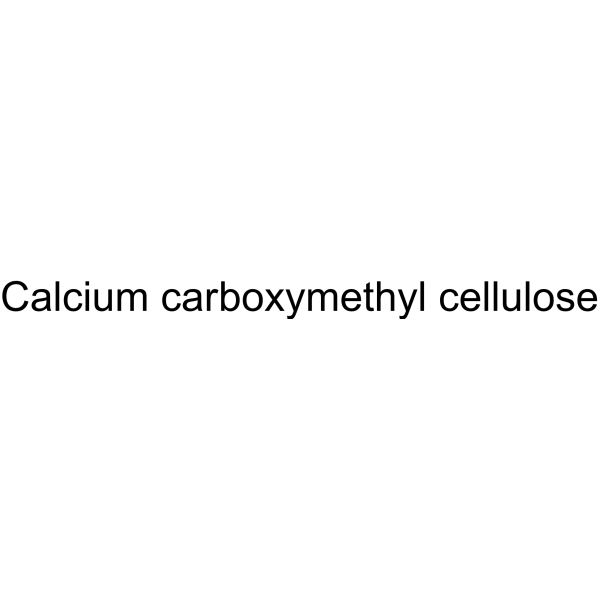CHEMICAL IDENTIFICATION
-
RTECS NUMBER :
-
FJ5850000
-
CHEMICAL NAME :
-
Cellulose, carboxymethyl ether, calcium salt
-
CAS REGISTRY NUMBER :
-
9050-04-8
-
LAST UPDATED :
-
199701
HEALTH HAZARD DATA
ACUTE TOXICITY DATA
-
TYPE OF TEST :
-
LD50 - Lethal dose, 50 percent kill
-
ROUTE OF EXPOSURE :
-
Oral
-
SPECIES OBSERVED :
-
Rodent - rat
-
DOSE/DURATION :
-
4400 mg/kg
-
TOXIC EFFECTS :
-
Behavioral - somnolence (general depressed activity) Behavioral - muscle contraction or spasticity Kidney, Ureter, Bladder - changes in bladder weight
-
REFERENCE :
-
GISAAA Gigiena i Sanitariya. For English translation, see HYSAAV. (V/O Mezhdunarodnaya Kniga, 113095 Moscow, USSR) V.1- 1936- Volume(issue)/page/year: 58(2),29,1993
-
TYPE OF TEST :
-
LC - Lethal concentration
-
ROUTE OF EXPOSURE :
-
Inhalation
-
SPECIES OBSERVED :
-
Rodent - rat
-
DOSE/DURATION :
-
>300 mg/m3
-
TOXIC EFFECTS :
-
Details of toxic effects not reported other than lethal dose value
-
REFERENCE :
-
GISAAA Gigiena i Sanitariya. For English translation, see HYSAAV. (V/O Mezhdunarodnaya Kniga, 113095 Moscow, USSR) V.1- 1936- Volume(issue)/page/year: 58(2),29,1993
-
TYPE OF TEST :
-
LD50 - Lethal dose, 50 percent kill
-
ROUTE OF EXPOSURE :
-
Oral
-
SPECIES OBSERVED :
-
Rodent - mouse
-
DOSE/DURATION :
-
6800 mg/kg
-
TOXIC EFFECTS :
-
Behavioral - somnolence (general depressed activity) Behavioral - muscle contraction or spasticity Kidney, Ureter, Bladder - changes in bladder weight
-
REFERENCE :
-
GISAAA Gigiena i Sanitariya. For English translation, see HYSAAV. (V/O Mezhdunarodnaya Kniga, 113095 Moscow, USSR) V.1- 1936- Volume(issue)/page/year: 58(2),29,1993
-
TYPE OF TEST :
-
LC - Lethal concentration
-
ROUTE OF EXPOSURE :
-
Inhalation
-
SPECIES OBSERVED :
-
Rodent - mouse
-
DOSE/DURATION :
-
>300 mg/m3
-
TOXIC EFFECTS :
-
Details of toxic effects not reported other than lethal dose value
-
REFERENCE :
-
GISAAA Gigiena i Sanitariya. For English translation, see HYSAAV. (V/O Mezhdunarodnaya Kniga, 113095 Moscow, USSR) V.1- 1936- Volume(issue)/page/year: 58(2),29,1993
-
TYPE OF TEST :
-
LC - Lethal concentration
-
ROUTE OF EXPOSURE :
-
Inhalation
-
SPECIES OBSERVED :
-
Rodent - guinea pig
-
DOSE/DURATION :
-
>300 mg/m3
-
TOXIC EFFECTS :
-
Details of toxic effects not reported other than lethal dose value
-
REFERENCE :
-
GISAAA Gigiena i Sanitariya. For English translation, see HYSAAV. (V/O Mezhdunarodnaya Kniga, 113095 Moscow, USSR) V.1- 1936- Volume(issue)/page/year: 58(2),29,1993 ** OTHER MULTIPLE DOSE TOXICITY DATA **
-
TYPE OF TEST :
-
TCLo - Lowest published toxic concentration
-
ROUTE OF EXPOSURE :
-
Inhalation
-
SPECIES OBSERVED :
-
Rodent - rat
-
DOSE/DURATION :
-
52 mg/m3/17W-I
-
TOXIC EFFECTS :
-
Blood - changes in erythrocyte (RBC) count Biochemical - Enzyme inhibition, induction, or change in blood or tissue levels - true cholinesterase
-
REFERENCE :
-
GISAAA Gigiena i Sanitariya. For English translation, see HYSAAV. (V/O Mezhdunarodnaya Kniga, 113095 Moscow, USSR) V.1- 1936- Volume(issue)/page/year: 58(2),29,1993
-
TYPE OF TEST :
-
TCLo - Lowest published toxic concentration
-
ROUTE OF EXPOSURE :
-
Inhalation
-
SPECIES OBSERVED :
-
Rodent - guinea pig
-
DOSE/DURATION :
-
52 mg/m3/17W-I
-
TOXIC EFFECTS :
-
Blood - changes in erythrocyte (RBC) count
-
REFERENCE :
-
GISAAA Gigiena i Sanitariya. For English translation, see HYSAAV. (V/O Mezhdunarodnaya Kniga, 113095 Moscow, USSR) V.1- 1936- Volume(issue)/page/year: 58(2),29,1993 *** NIOSH STANDARDS DEVELOPMENT AND SURVEILLANCE DATA *** NIOSH OCCUPATIONAL EXPOSURE SURVEY DATA : NOES - National Occupational Exposure Survey (1983) NOES Hazard Code - X2450 No. of Facilities: 23 (estimated) No. of Industries: 1 No. of Occupations: 1 No. of Employees: 738 (estimated) No. of Female Employees: 369 (estimated)
|


